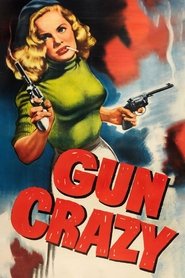… and guns never troubled America ever again. Still, where on earth did that one take come from — exhilarating stuff, compounded by the strangely naturalistic chit-chat between driver and passenger.
Unlike any number of Raymond Chandler knock-offs of the era, its dialogue sort of rolls over and dies in the mouths of Dall and Cummings, who frequently sounds like a morose, tanked-up Judy Garland. But it’s easy to see why auteurists like Sarris insist even today (when psychosexual interpretations of gunplay come off as a punchline rather than serious foreplay) in holding up the film as a model of directorial expression.
— Eric Henderson (Slant Magazine)
In the spring of 1964, François Truffaut came to New York to work on his book of interviews with Alfred Hitchcock and to meet with a pair of fledgling screenwriters, Robert Benton and David Newman, who had sent him their treatment (synopsis) of a script they were writing, Bonnie and Clyde, in the hope that he would direct the film. To help them develop the project, Truffaut arranged for a screening of the 1949 film Gun Crazy.[…]
John Dall and Peggy Cummins aren’t the last word in charisma, but, by directing them to speak in virtual whispers, he conjures an ambivalent intimacy that draws viewers uneasily close to a world of depravity. Lewis ingeniously plays down the violence but, by playing up Bart’s sensitivity to violence, brings the world of cinematic crime menacingly close to most viewers’ real-world aversions.
— Richard Brody (The New Yorker)
Synopsis: Bart Tare is an ex-Army man who has a lifelong fixation with guns, he meets a kindred spirit in sharpshooter Annie Starr and goes to work at a carnival. After upsetting the carnival owner who lusts after Starr, they both get fired. Soon, on Starr's behest, they embark on a crime spree for cash.

